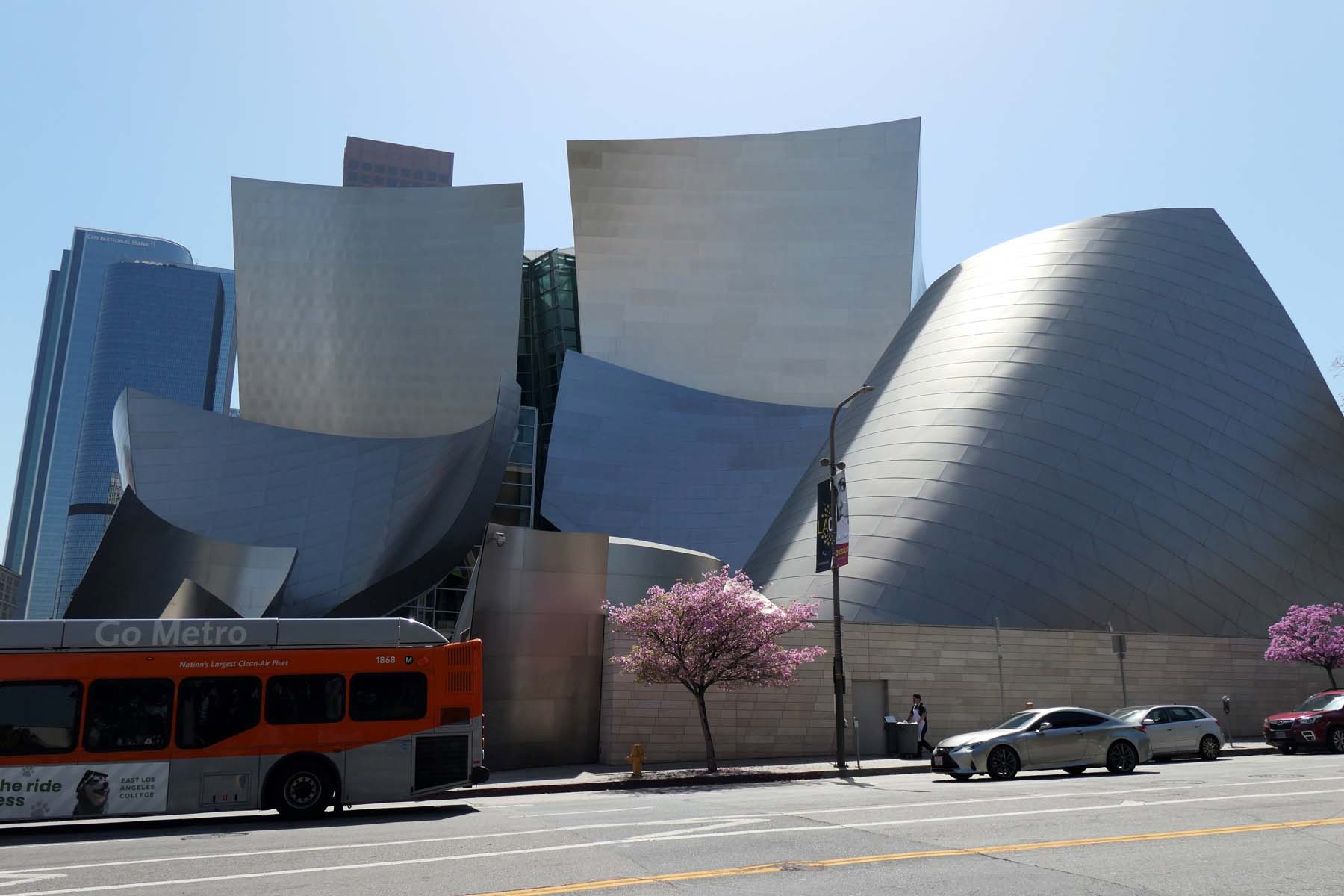I’ve been told a thousand times over that the word love should be reserved for living beings, and inanimate objects should be liked. I guess adjectives have to pull a lot of weight, then, to express my feelings: I boundlessly, fervently, intensely, unabashedly like L.A.’s Walt Disney Concert Hall, despite the insane amount of money that was poured into its creation, money that was so direly needed elsewhere in this city. (Upon completion, the project cost an estimated $274 million; the parking garage alone cost $110 million, paid by L.A.County raising the funds by selling bonds.)

Designed by Frank Gehry, the home of the Los Angeles Philharmonic opened its doors 20 years ago. It was in the works since 1987, with plans approved by Disney’s widow, Lillian Disney, who had commissioned the project. The construction went through quite a few rough patches, with fund raising stuttering along, and some not happy with the Deconstructionist design.


Inside, a large concert hall contains 2,265 seats with a vineyard-style seating arrangement that helps the audience feel close to the orchestra. There are no boxes and balconies, an attempt to avoid implied social hierarchies that are so often found in traditional performance venues. The room is also column-free, made possible by its large steel roof structure.

The outside is dominated by stainless steel panels, the waves and arcs made possible by a French computer modelling software, CATIA (computer-aided three-dimensional interactive application), a technology borrowed from aerospace and automotive industries. It allowed Gehry to transfer complicated models of the project into buildable forms and help contractors to translate a vision into an actual facade.

That facade delivered unexpected problems: most of it had a matte finish, but some parts were polished mirror-like panels. They ended up functioning like parabolic mirrors, reflecting sunlight in such concentrated fashion that the resulting glare led to increased traffic accidents. The reflected light also heated up surrounding condominiums, causing the air-conditioning costs for those residents to explode, and created hot spots on adjacent sidewalks of as much as 140 °F (60 °C). Two years after opening, the offending panels were identified and the surface sanded down to minimize the reflection ( I learned that from the brilliantly titled report “Dimming Disney Hall. Gehry’s Glare Gets Buffed.” )



The exuberant forms of the building, the simulated motion captured in the curvature, the strutting of the wings, the shimmering, glossy surfaces all seem the perfect instantiation of the movie industry’s selling of dreams that transport us, or try to, as the case may be. The structure links to and echoes its surrounds, both physically and in axiomatic ways, as all truly good architecture does.




It was remarkably quiet on the streets on a pleasantly warm and sunny weekend afternoon, with nary a person walking the blocks around the hall and the adjacent contemporary art museum, The Broad, side walk cafes almost empty.





The contrast to my other stop that afternoon could not have been more glaring: no sterility at the garment district. It was packed with people perusing outdoor markets around Santee Alley, in L.A.’s fashion quarters.

It was so crowded that I had to wear a mask outside. A stream of people perusing the wares, including fashion, jewelry, cosmetics, toys and electronics, hawkers’ calls, laughter and excited talk filling the air, kids included. Somewhat reminiscent of the wonderful time I spent in Mexico City, some years ago, given that I was surrounded by mostly Spanish speaking people this Sunday. The goods on offer were colorful and in abundance. So was the sea of humanity that meandered between the stalls, trying to spot a bargain amidst mass produced plastics and cheap imports.






It felt so alive in comparison to the sterile environment at the city’s center, if also living proof of the income inequality that marks our society.






L.A. county, home to one in four Californians, is one of the leaders in poverty, and direly affected by the epidemic. It hasn’t matched California’s gains in education, health, or jobs. And Los Angeles has been the biggest driver of rising inequality across the state.
The gap between high- and low-income families in California is among the largest in the nation—exceeding all but three other states in 2021 (the latest data available). Families at the top of the income distribution earned 11 times more than families at the bottom. California’s income distribution reflects high rates of poverty. Income is frequently not enough to meet basic needs. Families in the bottom quarter of the income distribution are at risk of poverty absent major safety net programs. Wealth is more unevenly distributed than income. In California, 20% of all net worth is concentrated in the 30 wealthiest zip codes, home to just 2% of Californians. (Ref.)

The density of people dropped abruptly once you entered the adjacent alleys, where I was lured by colorful graffiti and mural works, once again.












The excursion yielded one other discovery: a shop where you can rent some time and appropriate implements to express if not get rid of your rage. There are old car wrecks in a cage, cars you can hit, bang and stomp in any way you like with tools provided, sort of the adult version of the kids’ pillows that absorb their fury. Not the worst idea! Particularly in a city that incites lots of parking frustrations….


Music today is what you could listen to at the Philharmonic this week with Leila Josefowicz playing Thomas ADÈS Violin Concerto, “Concentric Paths.”
My path will go straight North as of this weekend. Will resume posting later next week.




